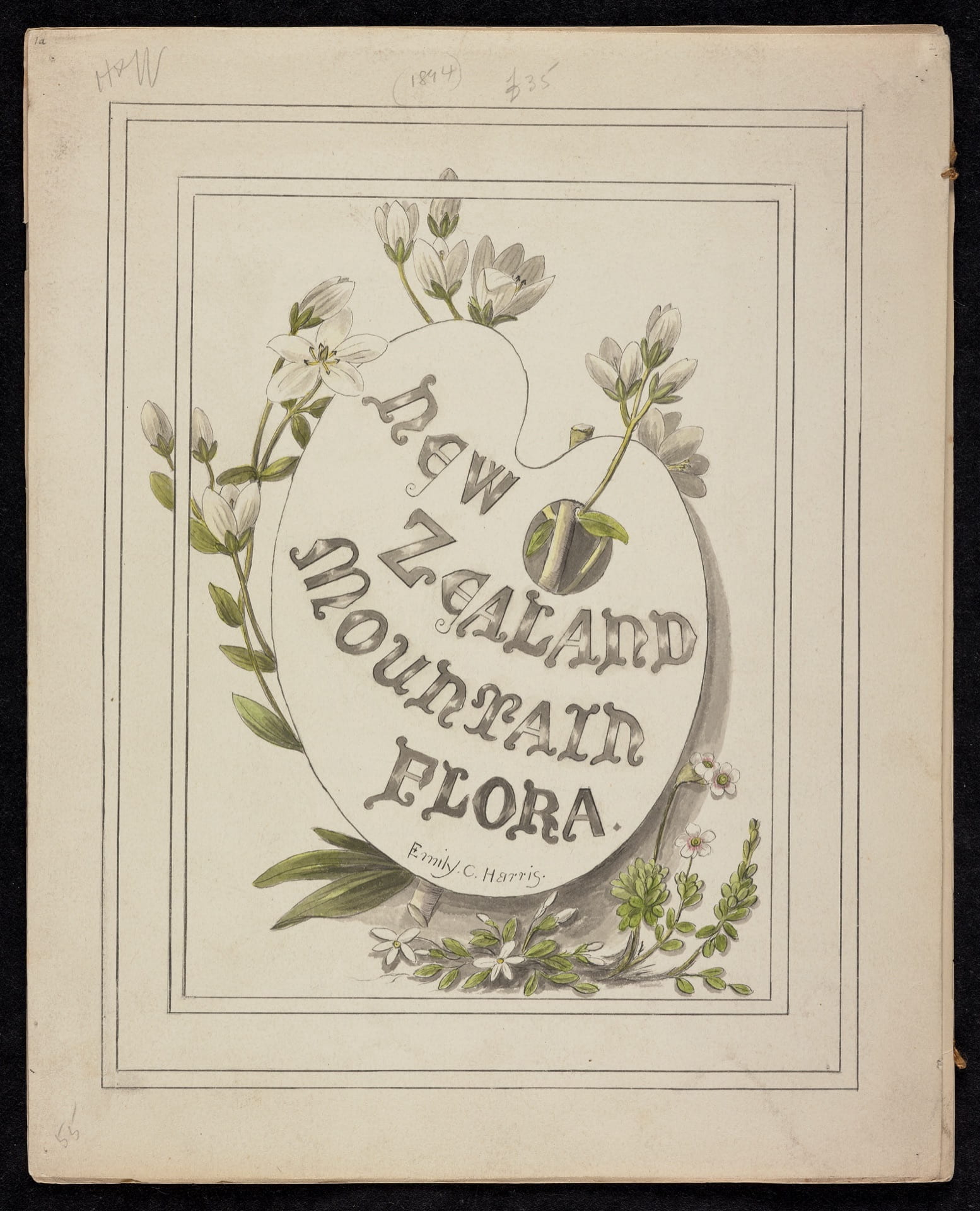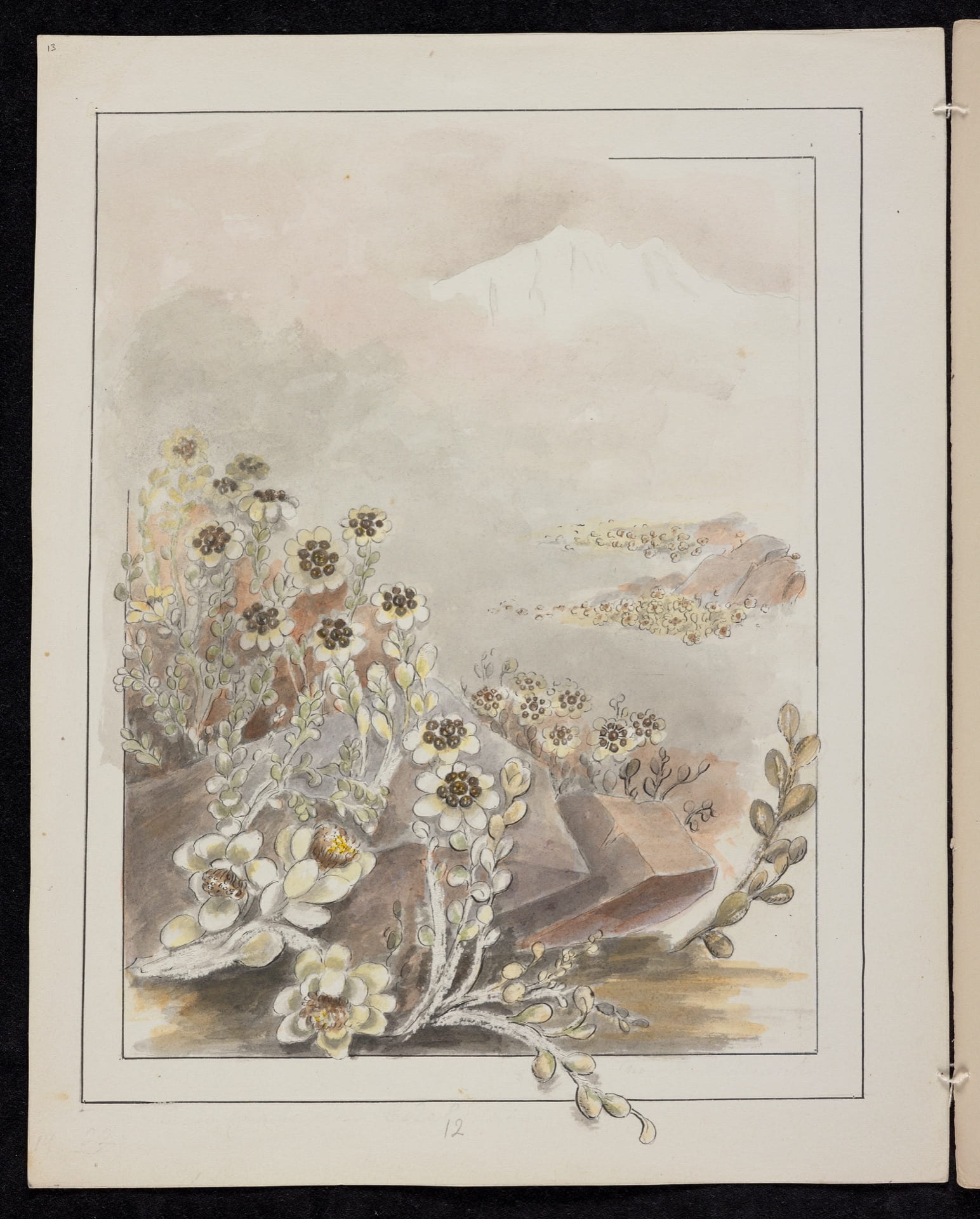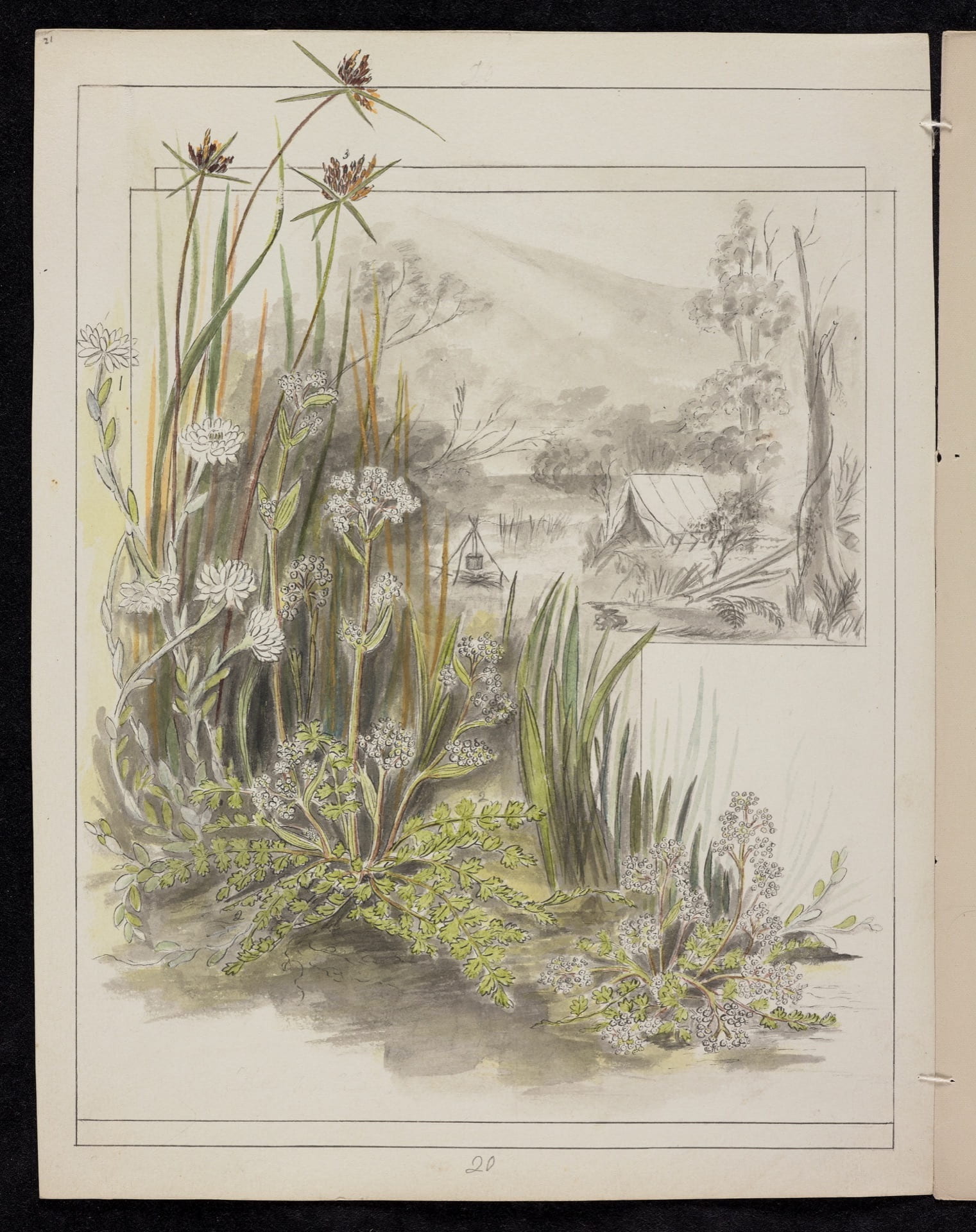By Michele Leggott

Botanical historian F Bruce Sampson thought Emily Harris’s illustrations of New Zealand mountain flora showed the artist’s concern for fine botanical detail as well as pleasing composition:
The pen, ink and watercolour originals for the unpublished New Zealand Mountain Flora (PLATES 33 and 34) are superb examples of botanical illustration. They are quite finely detailed, especially the creeping lawyer (Plate 34), and vividly and accurately coloured. The plants are shown in their environments, and this represents an advance on most of the botanical illustrations of predecessors and contemporaries. It may be that in some instances, where the plants seem to fit “uneasily” into their background, that Emily Harris did not see them in their natural habitat. In such cases the background seems to have been painted from a photograph. The twenty-nine illustrations (which include a frontispiece) are on paper about 25 x 31 centimetres and are watercolours with outlines in Indian ink. Each illustration is accompanied by a brief text, giving some details of the plants and their distribution. As was fashionable in the Victorian age, some plants are the subject of “delightfully awful” poems, written by the artist. (Sampson 101)
Bruce Sampson was looking at Emily’s mock-up of ‘New Zealand Mountain Flora,’ an artist’s book now held in the Alexander Turnbull Library in Wellington. The book is an excellent example not only of the conjunction of Emily’s art and writing but of how a major project can be lost to sight and then turn up again.
We know quite a lot about the development of ‘New Zealand Mountain flora’ because it grows out of Emily’s camping trip to the lower slopes of Taranaki / Mount Egmont in January 1890, when the mountain was covered in sub-alpine and alpine flowers. In her preface Emily mentions other camping trips in Nelson and acknowledges the help of botanists, professional and amateur, who have brought her rare specimens. By 1899 Emily was planning to publish the book of mountain Flora by subscription but the project fell through because of the expense of colour reproduction. Either at this point or in 1910 the book was sent to Emily’s wealthy English relatives Lord and Lady Rendel in London. Rendel purchased it for his private collection. When the Rendels died in 1912 and 1913, Emily’s book disappeared into the Rendel estate. It was picked up by New Zealand collector Kenneth Webster and when his estate came up for sale in 1970, Turnbull was able to purchase ‘New Zealand Mountain Flora’ and restore it to public view. Our reproduction of the plates and their facing texts supplies one more step in making the book visible to a larger audience.

Bruce Sampson mocks the ‘delightfully awful’ poems that sometimes accompanied the illustrations of Victorian flower albums and quotes Emily’s edelweiss poem. But Emily herself supplies the bridging between botany and poetry:
There are several varieties of New Zealand Edelweiss formerly included in the Gnaphaliums but now in the genus Helichrysum. Of these grandiceps and Leontopodium are nearest to the Swiss Edelweiss. The specimen brought to me had spots like brown velvet sprinkled with specks of gold. The leaves and stem and petals of flowers all covered with white cotton wool as if equipped for Alpine regions.
‘The Edelweiss’
Enwrapped in garments soft and warm,
As robes of eider down,
And velvet caps, all starred with gold,
Serve for a regal crown.
Straight to the skies their upward gaze
Unchecked, unblenched they turn,
As if to reach some loftier plane
These gentle flowerets yearn.

Superb botanical exactitude tops the historian’s requirements. But Emily was aiming her book at a more diverse audience, one that would be appreciative of artistic accomplishment, botanical text and poetic extension.
Thus year by year the number and variety of specimens had gone on increasing until it seemed a pity that such a collection should be hidden away in portfolios known only to a few especially as yet, no one has published drawings devoted entirely to New Zealand Mountain Flowers. With this idea I have worked for some years, and have now I hope, completed sufficient illustrations to be of interest to those who love to explore the mountain regions, and to remind them of flowers they may have passed on their way, and to those also who never expect to behold these children of the mists and snows in their native haunts. (Preface)

More information on the background and creation of ‘New Zealand Mountain Flora’ can be read in our new introduction. You can also find our reproduction of New Zealand Mountain Flora’ here, text transcriptions available by clicking on the images.
What a gorgeous post. The inset illustrations on some of the images are just lovely and the poems extend the illustrations in a way that shows Emily’s complete delight in the alpine flora she came across on her journeys. Thank you for sharing this beautiful archive.